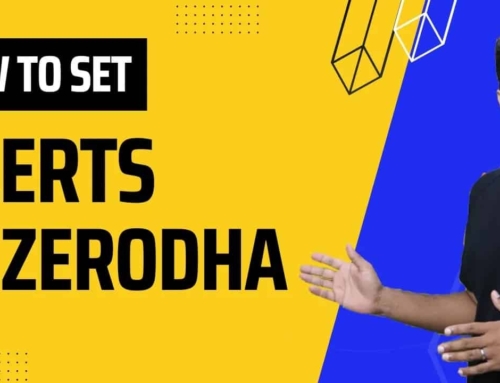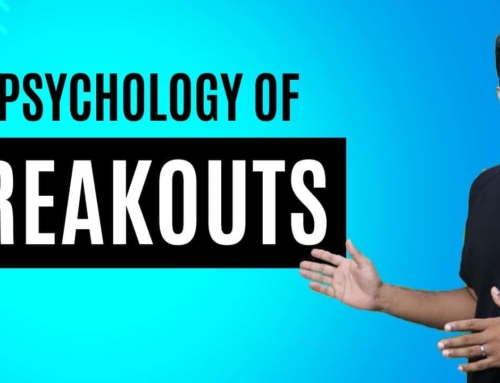What happens when a broker goes bust?
We all trade in the stock markets on the stock exchange using an intermediary also known as a broker. So, firms like Zerodha, Upstox, Sharekhan, etc. are all brokers who are authorized by the stock exchanges to conduct business on their behalf.
They are supposed to enable ordinary investors like you and me to trade on the stock exchanges without any glitches using their platform for a fee also known as brokerage.
Do brokers even close their business?
Since they provide ease and convenience to investors to invest and trade on the exchanges, they are quite popular and are hence custodians of huge sums of investor money. However, have you realized what would happen in case one of them goes bankrupt or simply shuts down his business? It might seem impractical, but I am sure you would have seen marquee investment firms like Lehman Brothers shut shop during the economic recession in 2008 that left lakhs of investors wondering what to do next.
In such a situation, will it be business as usual for your investment holdings?
What would happen to the stocks lying in your broker’s accounts?
Well, this is where SEBI or the Securities and Exchange Board of India comes into picture.
SEBI has several stringent rules and regulations in place which ensures that unscrupulous firms or fly-by-night operators do not get into the broking business.
The first rule would be the high entry fees to get into the broking business as this helps in keeping suspicious players and operators out of the market.
Next, comes the issue of obtaining permission from investors or the Demat account holders. Without obtaining the Power of Attorney from the investors, no brokerage can trade shares on their own. Again in order to complete a trade, an investor has access to a password or PIN which can be used only by him or her to decide on buying or selling a share.
Finally, it is the obligation of the broker to provide you with the statement of each and every transaction that has happened in your account.Again, this needs to be sent by the end of each trading day. This also ensures that fake transactions are not executed and the investor is aware of everything happening in his account. In case of any suspicious activity, they can report to the broker immediately and in case of noncompliance can also escalate the issue to the exchange and ultimately to SEBI.
Now, what happens in case your broker goes bankrupt? Will you get your money back and what about the shares in your demat account?
SEBI has already thought of such situations and hence started the Investors Protection Fund which has rules and regulations to be followed for investors in such situations. Investors would have to lodge a claim with the relevant Stock exchanges within the stipulated period and with the supporting documents to recover their money.
In case a stockbroker is expelled from membership or declared a defaulter, Stock
Exchanges give a public notice inviting claims relating to only the “transactions executed on the trading system” of the Stock exchange, from the investors.
Apart from this, investors also might have shares in their Demat account. Now, one thing that needs to be understood is that these brokers are only intermediaries and hence do not have access to the shares in your account. Shares are held in depositories such as CDSL and NSDL which hold these stocks in electronic form similar to a bank holding your fixed deposits.
Thus, when a stockbroker goes bankrupt, you do not need to worry about the shares as they will still be under your name.
So, what would be the reason for brokers to be either suspended or declared a defaulter. You would be surprised to know that there are several reasons for the same and some of them are listed below.
- Guilty of Misconduct – This could be due to fraud, violation of exchange rules, failure to submit returns, false returns, failure to pay dues or fees, etc.
- Un-business like conduct – This includes trading in fictitious names, having fictitious dealings, operating a prejudicial business, market manipulation, rigging of shares, etc.
- Unprofessional Conduct – Through dealing with business in shares which are not permitted, conducting business for employees of the exchange, evasion of margin requirements or brokerage charges, etc.
- Failure to provide Margin deposit and or Capital Adequacy Requirement
- Unwarrantable business or Unsatisfactory Financial Condition
However, even in case of suspension or expulsion of the broker, he is bound to fulfill transactions outstanding at the time of his expulsion and may with the permission of SEBI or the exchange close such outstanding transactions with or through another broker.
To sum it up, though India has one of the most stringent rules and regulations when it comes to dealing with trading and regulating brokers, it all comes down to the individual investors to be prudent enough in their dealings.
Though the shares in your demat account would remain safe with the respective depositories, the funds in your trading account with the broker are not and hence it is advised not to keep funds idle with the Stock Broker.
The procedure to claim funds from SEBI is often lengthy and a claim has to be raised with them through the exchange to retrieve the funds. The same is also mentioned on the website of SEBI under Chapter – 16, INVESTORS’ PROTECTION FUND vide its circular No. CIR/CDMRD/DEICE/CIR/P/2017/53 dated 13th June, 2017. Investors are advised to go through the same for further details.
What is the procedure to file the claim and with whom are investors required to file it?
The Investor Protection Fund constituted by SEBI is managed by NSE and BSE and hence depending on your broker, you would be required to file it with either of the exchanges.
In case of NSE, the following is the procedure to file a claim.
- All claims submitted by investors will be considered for processing by NSE if found due and payable in accordance with Rules, Byelaws, Regulations, guidelines etc. of the Exchange, SEBI circulars and Regulations.
- Note that the maximum compensation limit per investor is ₹25 lakhs out of the Investor Protection Fund.
- The claim can be lodged online on the Exchange portal https://investorhelpline.nseindia.com/NICEPLUS/welcomeUser where the relevant documents can be uploaded.
- However, a sample claim form and FAQ is made available on the Exchange website https://www.nseind ia.com/invest/details-to- be- provided-for lodging-claims for the convenience of the claimants. The claimants who have already submitted Form A need not file a separate claim against the said member.
- Alternatively, the claim form, duly filled and signed, along with the relevant documents may also be sent in physical form to the Defaulters’ Section of the Exchange at ‘Exchange Plaza’, BandraKuria Complex, Bandra (E), Mumbai 400 051 or at the regional / branch offices of the Exchange.
- For this purpose, the format of the claim form may be downloaded from https://www.nseindia.com or obtained from the corporate office at Mumbai or the regional / branch offices of the Exchange.
- The Exchange, however, urges all claimants to make use of the online claim lodgment facility as mentioned above for better tracking of your claims.
| In case of any queries you may contact the NSE on [email protected] or on toll free number 1800 266 0058 (Option – 2).
Some of the Do’s and Don’ts prescribed by SEBI to individual investors when dealing with marker intermediaries are as follows.
|
Always remember that safety of your funds and caution begins with you, first and always.
Hope this article helps you in your investing/trading journey.
As always, do not forget to subscribe to our channel and press the bell icon to receive timely updates on our videos.
All the best.
 What is it?
What is it?
Under the peak margin rule imposed by SEBI, traders are required to give 100 percent margin upfront for their trades. This, experts feel, will severely impact intraday trades. It may also be noted that Sebi introduced new margin rules a year ago for day traders.
Under the new peak margin norms, stockbrokers are required to collect minimum margins on leverage-based trade upfront, compared to the earlier practice of collecting it at the end of the day.
Sebi had decided to introduce the peak margin norms last year in order to curb speculative trading and restrict leverages offered by stockbrokers to their clients.
After the new norms were announced, stockbrokers stopped using end-of-day positions to calculate margin requirements and shifted to using intraday peak positions from December 2020.
Under these new norms, Clearing Corporations will seek minimum margin throughout the session and force brokers to collect additional margin from clients if they fall short. Stockbrokers who fail to do so will face a penalty.
As a risk mitigation measure, additional leverage will also be restricted and stockbrokers will be penalised if leverage offered to clients exceed VaR + ELM and standardised portfolio analysis risk for derivatives positions.
Stockbrokers will also face a penalty if margins collected from traders is less than 100 per cent of trade value in the case of cash market stocks and an additional Span + Exposure for derivatives trade.
SPAN Margin is the minimum requisite margins blocked for futures and option writing positions as per the exchange’s mandate.
The ‘Exposure Margin’ is the margin blocked over and above the SPAN to cushion for any MTM (Marked-to-market) losses.
Both the SPAN and Exposure margins are specified by the exchange. So at the time of initiating a futures trade, the client has to adhere to the initial margin requirement. The entire initial margin (SPAN + Exposure) is blocked by the exchange.
As per the new peak margin norms, the margin requirements will be calculated 4 times during every trading session. It will also include intraday trading positions.
Traders will now have to park more cash towards fulfilling margin requirements for trade. In fact, trading in futures and options (F&O) will also become more expensive.
Earlier, stockbrokers’ association ANMI had termed the market regulator’s new peak margin rule as unfair and it had even urged Sebi to reconsider its peak margin norms, especially related to intra-day trading.
Traders too are dejected with the new rule as they will have to cough up more money to bet in the stock market, especially for intraday and futures trades. Further, traders will also have to pay a penalty if the peak margin norms are not followed during a trading session.
Zerodha has a page on their website to find out the SPAN & Exposure margin required for a futures position or short option.
As per SEBI regulations, margin shortfall penalty is levied on trades performed without sufficient margin (SPAN & Exposure for F&O and VAR+ELM+Adhoc for equity), net buy premium, physical delivery margins and marked to market losses (if applicable) as prescribed by the exchange.
The charges imposed are given below.
| Short collection for each client | Penalty percentage |
| (< Rs 1 lakh) And (< 10% of applicable margin) | 0.5% |
| (= Rs 1 lakh) Or (= 10% of applicable margin) | 1.0% |
To understand why a penalty is levied, we will have to first understand about the Settlement cycle and the concept of Margin reporting in India.
The settlement cycle in India for Equities is T+2 and for F&Os, it is T+1. When you sell Equities and receive money as sale proceeds, such sale proceeds can be withdrawn only on T+2 day.
If you sold stocks worth Rs.1,00,000 on Monday, you would be able to withdraw these funds only on Wednesday. Monday would be taken as T-Day, Tuesday would be T+1 Day and Wednesday would be T+2 Day). Similarly when you sell F&O positions you would be able to withdraw these funds on T+1 day only.
The thing to be noted here is that when you sell an Equity position or an F&O position, only on the respective settlement day the funds become yours and you can use them. From the time you sell till the time it is settled, they would be considered as “Encumbered funds”.
Margin Reporting: When you take a position in the F&O Segment, the Exchange requires all brokers to report the funds available for such positions taken by client on a client to client level.
If you buy Nifty Options for ₹ 10 Lakhs, the Exchange would ask your broker of the availability of funds in your account and report the same to the Exchange. While reporting the availability of funds, your broker is required to consider only ‘free’ or ‘unencumbered’ balance. Any short reporting will attract a penalty. If your broker allows you to buy options worth ₹ 10,00,000 with only ₹ 6,00,000 in your account, the shortage in your account would be ₹ 4,00,000 on which a penalty is levied.
Why the restriction on intraday leverages?
Peak margin reporting was introduced to restrict brokers from providing additional leverage over and above what VAR+ELM ( with minimum 20% for stocks) and SPAN + Exposure (F&O – Equity, Commodity, Currency) already being offered.
Effective Dec 1st, 2020, the maximum intraday leverage offered by a broker has been restricted and this maximum leverage kept reducing until 01st Sep 2021 post which a broker could give maximum leverage = VAR+ELM(min 20%) or SPAN+Exposure.
- Dec 2020 to Feb 2021 — penalty if margin blocked is less than 25% of the minimum and 20% of trade value (VAR+ELM) for stocks or SPAN+Exposure for F&O.
- March 2021 to May 2021 — penalty if margin blocked less than 50% of the minimum margin required.
- June 2021 to Aug 2021 — penalty if margin blocked less than 75% of the minimum margin required.
- From Sept 2021 — penalty if margin blocked less than 100% of the minimum margin required.
The minimum margin is VAR+ELM(with a minimum 20%) for stocks and SPAN +Exposure for F&O. This minimum margin inherently has leverage, but there can’t be any additional leverage over and above this.
Until now, brokerage firms could offer any amount of intraday leverage, and now they cannot. Starting Dec 1, 2020, there is a maximum intraday leverage that could and this maximum intraday leverage kept going down from Dec 1, 2020, to Aug 31, 2021. However, from Sep 1, 2021, the maximum intraday leverage is equal to the SPAN+Exposure margin for F&O (Equity, commodity, currency) and VAR+ELM(with a maximum 20%) for stocks.
What do you mean by SPAN+Exposure & VAR+ELM?
This is the minimum margin that exchanges ask brokers to collect from the clients on an end of the day basis for any open position on that particular trading day. If this margin is not collected, there is a penalty on whatever margin was collected short and is called the short margin penalty. This penalty can be in the range of 0.5% to 5% of the shortfall per day.
What changes post peak margin penalty?
Since margin reporting happened only on an end of the day basis, brokerage firms allowed customers to take intraday positions with margins far lesser than VAR+ELM or SPAN+Exposure.
However, these additional intraday leverages offered through products like MIS, BO, CO, etc. would forcibly be squared off before the close of trading hours, ensuring there is no margin penalty on the end of the day open positions.
For example,
- If Reliance VAR+ELM is 20%. Instead of asking ₹ 2,00,000 for a ₹ 10 Lakhs Reliance intraday trade (MIS, CO, BO), some brokers would ask for only 5% or Rs 50,000.
- If Nifty futures required SPAN+Exposure of ₹ 1.5L, brokers would allow customers to trade intraday with say just 30% of this amount or ₹ 50,000.
The problem is that when a broker collects a lesser margin than the minimum from the client, the broker takes an additional risk. These margins are collected to protect the broker from client defaults.
For example, if a broker allows a customer to trade for ₹ 10 Lakhs with only ₹ 10,000 or 1% and if the stock moves say 10% instantly, the customer loses ₹ 10,000, but the broker loses ₹ 90,000 (until the broker is able to recover the money from the customer).
Competition forced some brokers to attract clients by offering excessive intraday leverages (50 to 100 times). This caught the attention of the regulator, especially after the issues at Karvy, BMA, etc.
In order to fix these issues once and for all, SEBI introduced the concept of peak margin penalty. This is similar to how a margin penalty is calculated if the margin collection is lesser than the minimum for the end of the day position. Now the same logic will be used to calculate margin penalty if the available margin is lesser than the minimum SPAN+Exposure (Equity, Commodity, Currency) or VAR+ELM margin at any point during the trading day (intraday).
Since this practice of additional intraday leverages was prevalent for several decades, SEBI gave enough time for the industry to adjust. The circular was put out in Aug 2020 and from Dec 2020 to Sep 2021 the restriction slowly increased.
- Dec 2020 to Feb 2021 — penalty if margin blocked is less than 25% of the minimum 20% of trade value (VAR+ELM) for stocks or SPAN+Exposure for F&O.
- March 2021 to May 2021 — penalty if margin blocked less than 50% of the minimum margin required.
- June 2021 to Aug 2021 — penalty if margin blocked less than 75% of the minimum margin required.
- From Sept 2021 — penalty if margin blocked less than 100% of the minimum margin required.
The minimum margin is VAR+ELM for stocks and SPAN +Exposure for F&O and this minimum margin inherently has leverage, but there can’t be any additional leverage over and above this.
How does it affect the traders and the Broking industry?
There are brokerage firms who have used additional intraday leverage as a marketing ploy to attract customers. Now with the new SEBI rules, higher the intraday leverage offered by a broker today, the more that business will be affected. The lesser the leverage, the less the effect will be for that brokerage firm.
For Traders
Intraday trading contributes significant liquidity to the markets. With restrictions on intraday leverage, the liquidity is bound to reduce and hence the costs for everyone might go up. However, one positive aspect from all this is that since high leverage is what usually destroys the careers of traders, now, without such high leverages, the chances of a trader surviving the market will go up significantly.
Hopefully the higher number of traders participating at any time will make up for the drop in liquidity.


 What is it?
What is it?

![What is Virtual Contract Note [Zerodha]](https://www.vrdnation.com/wp-content/uploads/2023/10/maxresdefault-virtual-note-500x383.jpg)



Leave A Comment